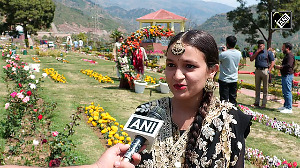When Richard Gaylord tells people he lives in a castle, few believe him.
"But it really is one," the developer protests. "We've got the turrets and all. I'm a stickler for detail, and I don't like doing things in half measure."
Castle ownership isn't for everyone, what with the heating costs, potential for plumbing problems and general conspicuousness of the structures. Gaylord's home isn't an ancient stronghold--he only recently put the finishing touches on his Elizabethan-style castle, which occupies a couple of the 170 acres at Camelot, a themed development he created in Durban, South Africa.
But Gaylord isn't the only homeowner turning fairytale dreams into reality. Though the number of castles sold worldwide is minuscule compared to the overall real estate market, it has increased in recent years, thanks to the rising wealth of buyers, increased visibility--there are several castle-specific Web sites out there--and general enthusiasm for real estate.
There is a surprising range of castle options to choose from these days. They can be age-old or spanking-new, in New Jersey or South Africa, and have turret-high or relatively affordable prices.
In fact, depending on the exact location, the size and the level of restoration, smaller castles can be purchased for as little as $1 million--easily the cost of a two-bedroom condo in Manhattan. Slightly grander castles will fetch somewhere between $2.5 and $5 million, says castle expert Alexander V.G. Kraft, chief executive of Sotheby's International Realty France.
He teases his American friends: "Why don't you sell your garage in London or New York and buy a castle in France instead?"
Of course, the price tags can be much bigger for historically significant, fully restored properties, particularly if they come with vast amounts of land. Consider the 10,000-plus square foot Villa Castiglione in Capri, Italy. Resting on nearly seven acres perched on a cliff above the sea, the seven-bedroom Camelot is currently on the market for $38 million.
Kraft estimates that a few hundred castles are up for sale around the world--often quietly, to protect owners' privacy.
And what qualifies as a castle has altered over time. During the Middle Ages, a castle was specifically a fortified structure, largely built to defend nobles against hostile intrusions. Today, the term encompasses a broader range of ornamental homes, from manors to mansions to chateaux.
According to Kraft, France, England, Italy and Germany have the hottest castle markets. But the U.S. is home to a host of 19th and early 20th century homes inspired by the antique examples across the ocean.
Take Singer Castle, aptly named for its original owner, Frederick G. Bourne, president of the Singer Sewing Machine Company, in Alexandria, N.Y. The five-story, 28-room castle, now on the market for $22 million, was completed in 1905 and features secret passageways, hidden entrances and a dungeon.
And now, there is a modern castle industry. Roger DeClements says his Idaho-based firm, CastleMagic, has already constructed four castles and has two more in the pipeline. Though he has had some interest from overseas, his inquiries typically come from wealthy types looking for a unique place to call home--or members of the Society for Creative Anachronisms, a medieval reenactment group.
While the castles no longer need to serve their original purposes of keeping out marauding hordes or providing spots from which to pour boiling oil, his clients demand all of the stereotypical castle features.
"You know, the secret passageways, the large towers, the drawbridges," DeClements says. "They're looking for everything that Hollywood has drummed up from them."
That is, everything except the old-world drawbacks--drafts, leaks and plumbing problems among them.
"It is not unusual to find a castle that offers 40 or more bedrooms, but only two bathrooms, and has central heating in only one inhabitable wing of the castle," says Sotheby's Kraft. "Most castles were built on a rather grand scale several hundreds of years ago when the lord of the manor had a staff of at least 20 people to run and maintain his property."
Rene Palsenbarg, president of commercial properties at Sotheby's International Realty Canada and broker for the Singer Castle, echoes, "Certainly the maintenance and the upkeep can be a downside. They're older, their systems are older." He adds, "It's like buying any old house--you have to go in with both eyes open."
But for some, the hankering for beauty and history outweigh the risks, says Thierry Journiac, founder of Switzerland-based TerraCognita Estate Solutions. "Due to their character, their uniqueness and their location--most of the time in the countryside--castles also represent a way of life."
While the real estate market seems to be slowing for luxury properties in general, brokers argue that the market for unique homes steeped in history--not to mention beauty-- functions independently.
"For many people, owning a real castle is a lifelong dream, and once that dream is eventually fulfilled, normal market considerations do not necessarily apply," explains Kraft.






 © 2025
© 2025